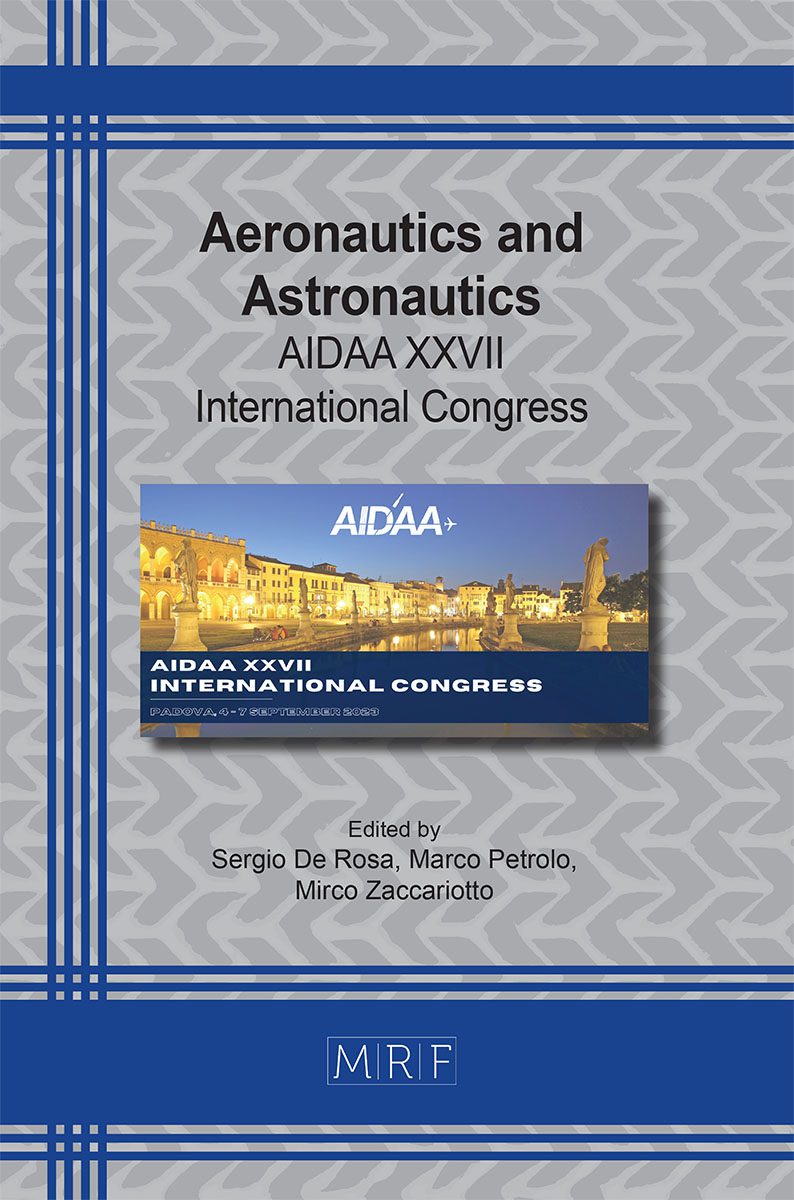Recent developments about hybrid propelled aircraft: a short review
L.M. Cardone, S. De Rosa, G. Petrone, F. Franco, C.S. Greco
download PDFAbstract. Over the last decades, the rapid growth of the consumption of fossil fuel has generated an increased need for energy sustainability. The negative impact on the environment and now, as a global society, the dependence on fossil fuel have been questioned. For contrasting these adverse effects, NASA calls on the aeronautic industry to reduce aircraft fuel burn by 70% by 2025 in their N+3 concepts. Following high-profile government and industry studies, electric aircraft propulsion has emerged as an important research topic, this includes all-electric, hybrid electric, and turbo-electric architectures. The paper overviews the recent state-of-art about the innovative propulsion systems exploring the operating logic, their technological requirements, the ongoing research, and development in all the components necessary to make this technological change a feasible option for the future of passenger flight. It will be also reported the existing commercial products, prototypes, demonstrators for having a precise picture of the situation.
Keywords
Hybrid Propulsion Systems, Fuel Cell, Electric Aircraft
Published online 11/1/2023, 5 pages
Copyright © 2023 by the author(s)
Published under license by Materials Research Forum LLC., Millersville PA, USA
Citation: L.M. Cardone, S. De Rosa, G. Petrone, F. Franco, C.S. Greco, Recent developments about hybrid propelled aircraft: a short review, Materials Research Proceedings, Vol. 37, pp 448-452, 2023
DOI: https://doi.org/10.21741/9781644902813-99
The article was published as article 99 of the book Aeronautics and Astronautics
![]() Content from this work may be used under the terms of the Creative Commons Attribution 3.0 license. Any further distribution of this work must maintain attribution to the author(s) and the title of the work, journal citation and DOI.
Content from this work may be used under the terms of the Creative Commons Attribution 3.0 license. Any further distribution of this work must maintain attribution to the author(s) and the title of the work, journal citation and DOI.
References
[1] Ng, K.S., Farooq, D., Yang, A., 2021. Global biorenewable development strategies for sustainable aviation fuel production. Renew. Sustain. Energy Rev. 150, 111502. https://doi.org/10.1016/j.rser.2021.111502
[2] Brelje, B.J., Martins, J.R.R.A., 2019. Electric, hybrid, and turboelectric fixed-wing aircraft: A review of concepts, models, and design approaches. Prog. Aerosp. Sci. 104, 1–19. https://doi.org/10.1016/j.paerosci.2018.06.004
[3] Olabi, A.G., et alii, 2021. Fuel cell application in the automotive industry and future perspective. Energy 214, 118955. https://doi.org/10.1016/j.energy.2020.118955
[4] Singh, K.V., Bansal, H.O., Singh, D., 2019. A comprehensive review on hybrid electric vehicles: architectures and components. J. Mod. Transp. 27, 77–107. https://doi.org/10.1007/s40534-019-0184-3
[5] Harris Aerial, 2023. Carrier H6 Hybrid. https://www.harrisaerial.com/carrier-h6-hybrid-drone/
[6] ZeroAvia, 2022. ZA2000 2-5MW modular hydrogen-electric powertrain for 40-80 seat regional turboprops by 2027. https://zeroavia.com
[7] AIRBUS, 2022. ZEROe :Towards the world’s first hydrogen-powered commercial aircraft, https://www.airbus.com/en/innovation/low-carbon-aviation/hydrogen/zeroe#:~:text=In%202022%2C%20we%20launched%20our,combustion%20propulsion%20system%20by%202025
[8] Cardone L. M., et alii, 2023. Review of the Recent Developments about the Hybrid Propelled Aircraft, submitted to Aerotecnica Missili e Spazio, under review.












